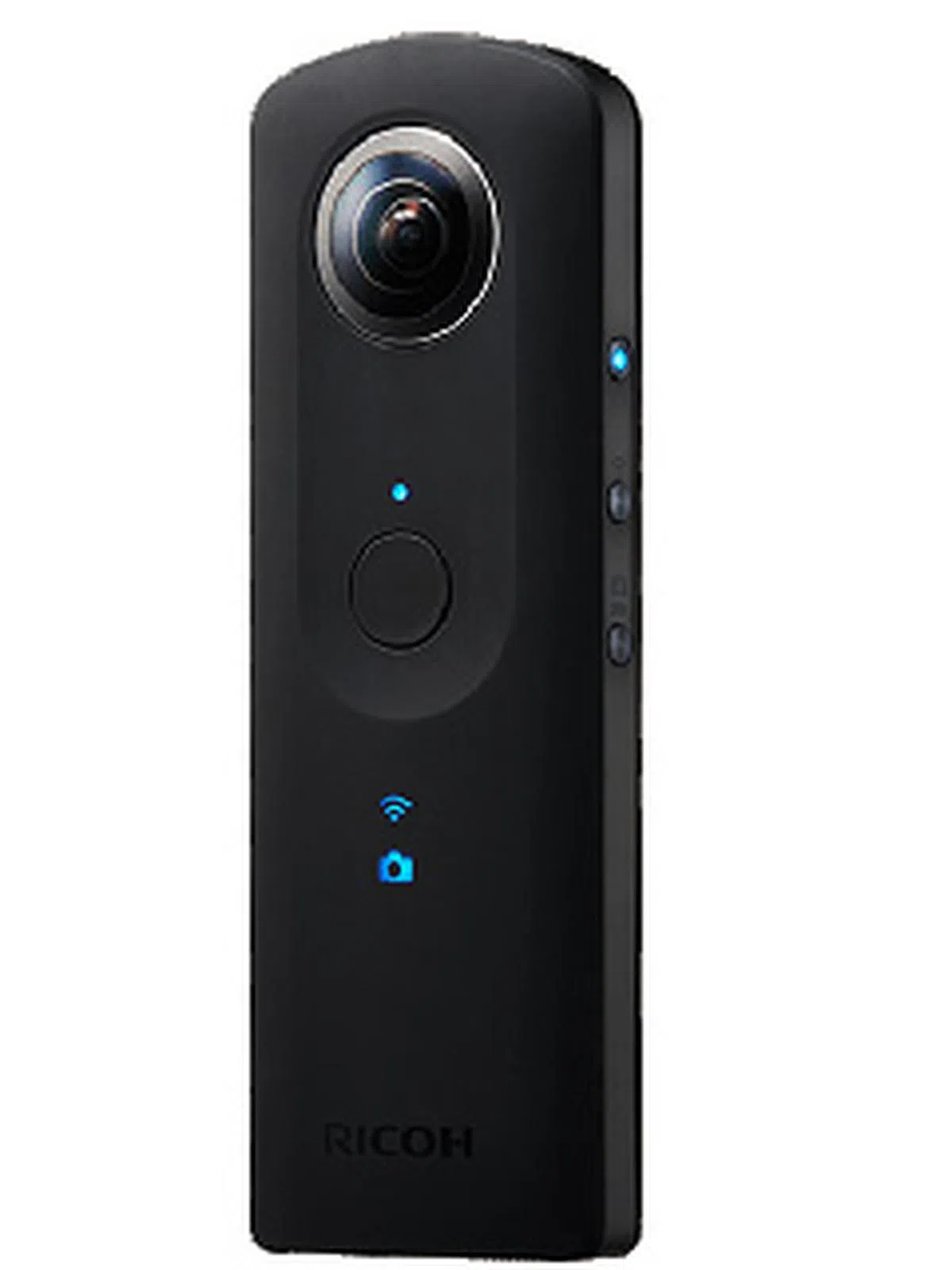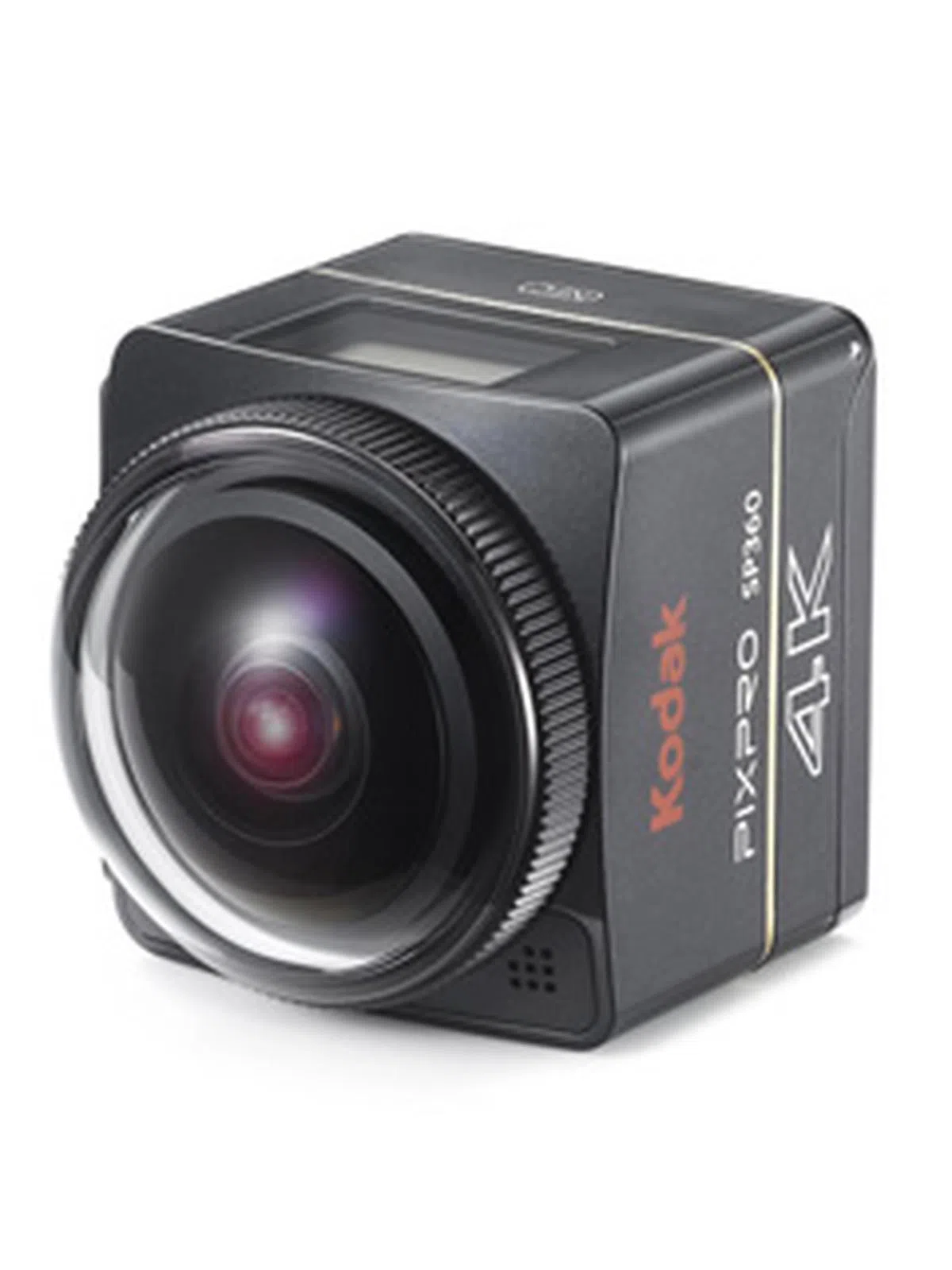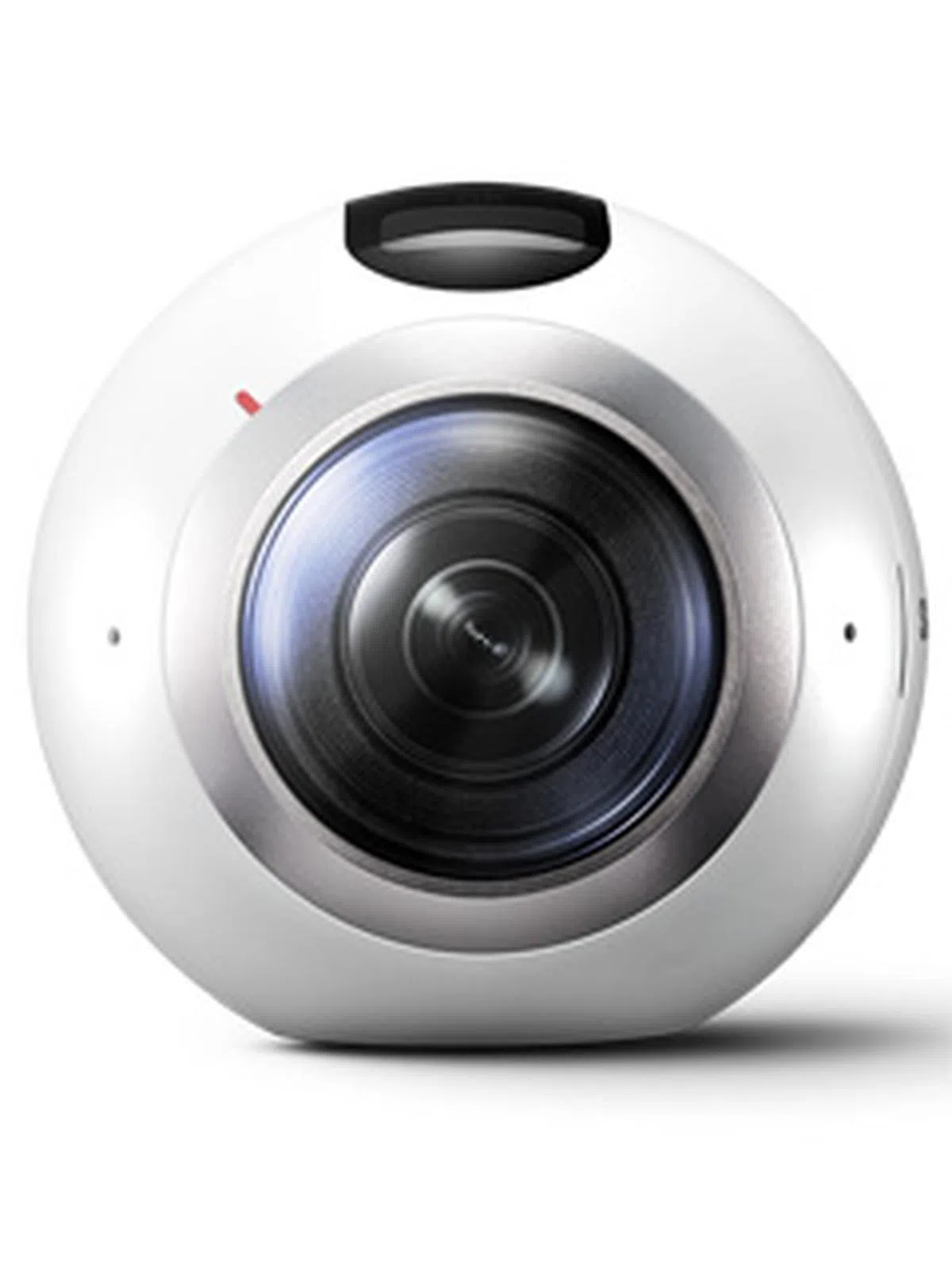Shootout: Four 360-degree cameras compared!
Selfies and social media have made sharing your experiences a daily must-do. 360-degree cameras one-up that, letting you share the entire world around you at that point of time. We rounded up four such options from earlier this year to to find out which is best.

The world is round
Selfies and social media have made sharing your daily experiences a must-do. Now, camera companies have moved on to what they hope is the next big thing – giving the world your global overview. 360-degree cameras do just that, using two extreme fish-eye lenses to capture everything around you. We’ve rounded up four 360 cameras - the Kodak SP360 4K, the LG 360 Cam, the Ricoh Theta S, and the Samsung Gear 360 - to find out which is best.
Kodak SP360 4K

Kodak has been attempting 360o photography since as early as 2014. Their first PixPro SP360 contained a single lens with a 214o field-of-view and did HD (1080p) video, but that didn’t quite hold up to being stretched to the 360o format used by YouTube, so now Kodak has upped their game to provide 4K video with the SP360 4K.
The new approach is to use two units mounted back to back, with software to help stitch the resulting captures. Unfortunately this means a larger setup overall, as you have two cameras back-to-back, and a mount frame to hold them together. While there is an app support for capture via your smartphone, the app is only able to control one unit at a time as each unit creates its own Wi-Fi network to connect to.

Control of the Kodak SP360 4K is via these buttons or the included remote.
How you make captures with both cameras simultaneously then, is by way of a remote (included in the DualPro pack) which can be strapped on your wrist like a watch. This has only two switches – to change between shoot modes (stills/video) and capture format (global/front) – and two buttons – one for capture, and one to turn on/off the entire setup.
Notifications for a capture or the powering on/off of the unit are by way of beeps and the flashing of the LEDs on both the remote and the cameras. All three units work quite nicely in sync, even powering up and down together. And because 360o photography basically means you're taking a picture/video of everything around you, you don't feel like you lose too much without live view from the camera.

The Kodak SP360 4K has microphones on front of the camera.
The Kodak SP360 4K comes with a good deal of accessories right out of the box, especially if you get the DualPro pack, so you won’t have to worry about getting the two units aligned just right. We just wish they used a standard tripod mount as the main connection point instead, as that would have added even more flexibility to the system.
Kodak SP360 4K | |
Sensor | 1/ 2.3-inch type |
Effective Pixels | 12.4 megapixels |
Max Aperture | f/2.8 |
Max Stills Resolution | 2, 880 x 2,880 (single camera) |
Max Movie Resolution | 3,840 x 2,160 (flat) 2,880 x 2,880 (round) |
Storage | microSD |
Size | 48.0 x 50.0 x 52.5mm |
Weight | 102g (single unit) |
Price | S$758.00 (single unit), S$1,519 (dual-unit kit) |
LG 360 Cam

The LG 360 Cam is the smallest and lightest camera in this shootout, and will work with any smartphone as there are versions of the 360 CAM Manager app for both iOS and Android. Unlike the Kodak and the Samsung models, the LG 360 Cam comes in a flat stick factor with two spherical cameras on either side, making it easier to transport and hold.
Meant to be controlled via app, the camera is very simplistic in design. There are just four tiny LEDs on the body; one to indicate power, one that indicates the camera is in use, and two to indicate shoot modes (360o/180o). Finally, there’s a relatively large shutter button in the center of the body that you can use if you’re not using the app.

The cover both protects the lens and acts as an extended grip for the camera.
The camera comes with a dedicated cover that you can flip over to use as a handle extension, and there’s a standard ¼-inch tripod screw thread on its base so you can mount it on any standard photography stand or tripod.
Moving on to the 360 CAM Manager app, this follows the standard camera app on most LG smartphones – which means it’s nicely designed, with quite a number of options for manual controls if you so wish. From the app, you can switch between 360o or 180o capture modes, and switch the camera that you’re getting live view from.

Simple LEDs by the side of the camera indicate it's operating state.
If you toggle the app to manual mode, you can even adjust things like ISO, white balance and shutter speed in real-time, though you will need to finish recording to go back to automatic mode or to shift between 360o or 180o capture.
Overall, it’s a very simple setup, made even better by the fact that the camera automatically processes all the images it takes to a 360o format, so you won’t have to do any processing after you’re done shooting. Simply upload your selected images to a website that supports 360o images and you’re done.
LG 360 Cam | |
Sensor | 1/ 2.3-inch type |
Effective Pixels | 13.0 megapixels |
Max Aperture | f/2.8 |
Max Stills Resolution | 5,560 x 2,830 |
Max Movie Resolution | 2,560 x 1,280 pixels |
Storage | microSD |
Size | 40.0 x97.0 x 25.0mm |
Weight | 76.7g |
Price | S$398.00 |
Ricoh Theta S

Like the LG 360 Cam, Ricoh’s Theta S camera also comes in a long stick factor, with a few simple buttons that allow you to trigger the shutter and switch between video or photo mode. However, the Theta S is significantly longer, and has LED icons to indicate the connection status and the capture mode it currently is in.
It adds a new Wi-Fi module that brings four times the transfer speeds of the previous model, and increases resolution and ISO range while doubling the internal memory. Unlike the other cameras in this shootout, the Theta S has an internal memory of 8GB so you can really pick it up and just start shooting – no cards needed.

The shutter button on the Theta S is much larger than the others.
There is again a standard ¼-inch tripod screw thread on its base for easy mounting, and it comes with a padded cover for transport. The rubber finish over the camera and the longer (130mm) body makes this the easiest camera to hold in your hand though, as there’s enough body for you to grasp without fear of touching the lens.
Connecting to the app requires putting your camera on the dedicated Wi-Fi network created by the Theta S, and we found the connection to be fairly stable throughout. You have a choice between panorama or full screen mode, but both have their own issues. The app is locked in portrait view, so even if you tilt your phone, you only get a small panorama across the width of your phone.

Three small buttons on the side allow for switching between modes and initiating the Wi-Fi connection,
That leaves for a huge shutter button, and a menu which has two arrows with the mode name in between. Clicking on either arrow cycles between modes (auto, shutter priority, ISO priority, and manual), with various options respective to the mode appearing at below. It’s not the most intuitive design, but is functional enough. Like the LG 360 Cam, images from the Ricoh are stored directly to 360o format so you can upload them without further processing.
Ricoh Theta S | |
Sensor | 1/ 2.3-inch type |
Effective Pixels | 14.0 megapixels |
Max Aperture | f/2.0 |
Max Stills Resolution | 5,376 x 2,688 |
Max Movie Resolution | 1,920 x 1,020 pixels |
Storage | 8GB internal memory |
Size | 44.0 x 130.0 x 22.9 mm |
Weight | 125g |
Price | S$628.00 |
Samsung Gear 360

In terms of physical appearance, the Gear 360 most embodies the idea of a 360o camera, as it resembles a sphere with a flat base that has a standard ¼-inch tripod screw thread. This looks nice, but makes for tricky handling as the tiny tripod legs don’t present you with a very good grip. The spherical design also means that you’re bound to get fingerprint marks all over the two fisheye cameras while handling the unit.

The Gear 360 comes with its own mini tripod which doubles as a grip.
There’s a microSD slot, USB port, and battery kept behind a flap on the side of the camera, and a tiny PMOLED display on top to indicate status and which mode the camera is in. As with the other cameras above, live view and control of the Gear 360 is via app. However, at the moment that works only with selected Samsung smartphones ( currently compatible with the Galaxy S7 and Galaxy S7 edge, Galaxy S6+, Note 5, Galaxy S6 edge and Galaxy S6), so it is a bit of a closed system.
Also, the camera doesn't create 360o images on its own, nor is there software you can download to process the images on your computer (the Samsung software only handles 360o video), so you will have to transfer them to one of the newer Samsung Galaxy phones to have them processed.

The Menu button isn't the most obvious.
That said, the app interface itself is quite nice. Like the app on the LG, this is nicely laid out, with easy access to settings like white balance, image size, exposure compensation, and self-timer. The nice thing is that the app supports landscape orientation, so you can really take advantage of the entire length of the screen.
However you don’t get the manual controls available with the apps for the Ricoh and the LG, and it would be better if the mode icon was better demarcated as at it moment it looks more like a label than a button. We've even more photos and handling info in our previous hands-on piece.
Samsung Gear 360 | |
Sensor | - |
Effective Pixels | 15.0-megapixels |
Max Aperture | f/2.0 |
Max Stills Resolution | 7,776 x 3,888 pixels |
Max Movie Resolution | 3,840 x 1,920 pixels |
Storage | microSD |
Size | 66.7 x 56.3 x 60.1mm |
Weight | 153g |
Price | S$498.00 |
Testing
To test out the 360 cameras adequately, we took them down to the Marina Bay Sands area and also to Gardens by the Bay. This gave plenty of opportunity for the cameras to catch full 360o panoramas in both bright day light and low light. We settled on four areas for our final testing to see how each one performed. (Do wait for the controls to pop up before you try to pan or zoom into the picture.)
Flower dome (ground floor)
Kodak SP360 4K

LG 360 Cam

Ricoh Theta S

Samsung Gear 360

Remarks
The flower dome is a great place for testing the camera's ability to resolve fine detail, given the number of flowers around. These also provide a good test for color accuracy, given how many colors they have. From the images above, the first thing that pops out is how prone to flaring the Kodak SP360 is, and that's a trend that follows throughout the shoot. This is much better controlled in the Ricoh Theta S and the Gear 360, with the latter presenting quite a nice sunburst effect.
You'll also notice that color noise is very visible in the images from both the LG 360 and the Samsung Gear 360. Compared to the Ricoh Theta S and the Kodak SP360, the green floor of the flower dome seems strewn with color noise, and there just isn't as much detail in the images. Pan around with the LG 360 and the Samung Gear 360 and you'll see quite obvious smudging too. In terms of exposure, it seems the Kodak SP360 tries expose for accurate colors, while the Ricoh Theta S tries to preserve highlights. In the case of the SP 360, this led to detail loss because the white flowers became over exposed.
From the flower patch in the center it seems the Ricoh Theta S captures the most detail, followed by the LG 360. For all of the cameras there seem to be certain areas where you get obvious blurred patches, and we think these areas are where the camera tries to join what's captured by the front and back camera. Given that the Kodak SP360 actually uses two units to get 360 pictures, we expected it to be the best in this respect, but that wasn't the case. This round goes to the Ricoh Theta S.
Flower dome (upper deck)
Kodak SP360 4K

LG 360 Cam

Ricoh Theta S

Samsung Gear 360

Remarks
For this location, we wanted to see how well the 360 cameras handled the strong sunlight from the glass roof while taking a look at how they rendered the details from the dragon sculpture to our left. In this, the Kodak SP360 performed best, giving noticeably more detail than the others. (Which really seem to be little more than smudges.)
Unfortunately, it also seems the Kodak SP360 is also the only one that has slight issues with blending images from its front and back camera. You'll notice that the woman in red taking an image with her phone seems to have three arms! The Samsung Gear 360 and Ricoh Theta S didn't perform too poorly here either, but obvious color noise is seeping in again in the image from the LG 360 Cam.
This seems to be quite a problem with the LG 360 Cam as the images from it are consistently the darkest, suggesting that it doesn't quite have the ISO range of the other cameras.
Art Science Museum
Kodak SP360 4K

LG 360 Cam

Ricoh Theta S

Samsung Gear 360

Remarks
With this scene, we were looking to see how the cameras dealt with wide open vistas and sunset. The Shenton Way skyline gave plenty of objects of visual interest in the front, with the Art Science Museum providing an interesting backdrop to the rear. With this, we'd say the Ricoh Theta S did the best job in terms of capturing detail from the overall scene. It's not fantastic, but at least it holds detail together well enough to make out individual buildings and planks of wood.
It was also easily the best at creating a seamless image, as with any of the other cameras, panning to the left or right would reveal an obvious join mark in the sky. We must say the Kodak SP360 did a good job of producing similarly exposed images though, so you don't feel like there are two obvious halves when you pan around the image.
Unfortunately though, its propensity to over-expose also shows up here, and you can easily see that many of the highlights have been blown out. In terms of overall performance, the Ricoh Theta S once again comes up tops here.
Helix bridge
Kodak SP360 4K

LG 360 Cam

Ricoh Theta S

Samsung Gear 360

Remarks
In our final tests for the day, we moved to the Helix bridge for some low light shots. This was where the Ricoh Theta S and the Kodak SP360 really separated themselves from the pack, as the combination of over-aggressive noise reduction from the LG 360 Cam and the Samsung Gear 360 really took out all detail from their images.
We have to say the Samsung Gear 360 did a good job with the accuracy of colors captured though. Sadly, the LG 360 Cam is definitely one camera that works best in bright light as the images captured suffer from too much color noise and also seem to have a bit too much cyan. The Kodak SP360 does a good job of handling noise overall, but it seems to be at the cost of image detail as there is a lot of image smudge observed.
Also, it seems to have missed out the join on the left me as you can clearly see a dual-image of the handrail near the woman. Something isn't quite blended properly there and there isn't that much fine detail in the buildings as the window lights are all blown out. Compared to all of these, the Ricoh Theta S has done a fantastic job.
The people to the left are blurred due to their motion and not from noise reduction, while you can still make out a good amount of detail from the buildings both to the left and to the right. When you pan to the rear (which is the point of having a 360 camera to begin with), the image is also nicely captured, with the flaring from the bridge lights well controlled.
Conclusion
Kodak SP360 4K
Because it requires a two unit setup, we expected the SP360 4K to produce the best images in low light, and images taken in low light certainly were a lot cleaner than what we could get with the LG 360 Cam and the Gear 360. But in terms of overall sharpness and handling of noise, fell short of what the Ricoh Theta S produced. The camera also seemed to be prone to flaring; likely because the automatic exposure seems to expose for shadows. Images from the SP360 4K were easily the brightest for every shot. In our outdoor test at the ArtScience Museum, we had sunset in front of us, and the museum behind. With the LG and the Samsung, this produced an obvious band where the images from front lens and rear lens met, but with the SP360 4K this was decently controlled. However, it costs S$758 for a single unit, meaning you would have to spend S$1,519 just to get 360 images or video from this setup.
LG 360 Cam
The cheapest camera in this shootout at just S$398, images taken with the LG 360 Cam look good straight out of camera in day light, and its exposure system tends to give a more accurate reflection of the scene compared to the Kodak SP360 4K. However, we found that noise tends to seep into to your images significantly once light levels drop. In our shots from the helix bridge, there’s so much noise that you can barely make out any of the lines in the picture. Color noise is abundant too; something that’s very evident in the image of the ArtScience Museum. As we noted above, there’s also quite an obvious band where the image from the front lens blends with the one from the rear lens. If there’s a person/object at that spot, you’ll likely find severe blurring there too, indicating that the algorithm for blending images in-camera could do with a bit of fine-tuning.
Ricoh Theta S
In terms of sheer image quality, the Theta S stands out as the best among the group. Images from this camera hold good detail, and the camera gives you great low-light performance as evidenced from the shot on the Helix bridge. There’s a nice rendering to the night sky, and compared to the other cameras, flaring from bright light sources is fairly well controlled. There really isn’t much color noise in any of the images from the camera, though some smudging from noise reduction does occur in overcast situations. It's not the cheapest option at S$628, but what's impressive is how well it handles the blending between the front and rear lens is handled. In most of the images captured, the only give away is a slight bit of smudging. You don’t get a huge difference in exposure between front and rear cameras, and the only give-away is when you pan straight up, so the image quality is certainly pretty good there.
Samsung Gear 360
Handling concerns aside, taking images with the S$498 Gear 360 is quite a pleasant experience thanks to the nicely designed app, and the fact the camera itself is fairly responsive. Like the LG 360 Cam, images from the Gear 360 are nicely exposed, and have good colors. However, it too suffers in low light, as the combination of abundant noise and over-aggressive noise reduction makes for pictures with little detail but plenty of artefacts. Also, the joins between images from both lenses are quite obvious compared to the rest of the cameras in this shootout; especially when you look at the image of the ArtScience Museum where there’s an obvious line down the boundary where the images from both lenses meet. Flaring is fairly well-controlled, but we do think the camera could do a better job with fine detail given it has the sensor with the highest rated resolution.
And the best 360 camera is...

The Ricoh Theta S consistently turned in the best images in all the situations we put it through, thus justifying the higher price tag. That said, we would like to see the app interface improved – at the very least, there needs to be live view in video mode, and the viewing area for photo mode could definitely be improved to better take advantage of your smartphone’s larger screen. Also, adding the option of a microSD slot in addition to the built-in memory would be most helpful when you take the camera for overseas trips and can’t easily transfer what you’ve already captured. Ultimately though, in terms of price versus features and quality, the Ricoh Theta S comes up tops, so it’s the winner of this shootout.






